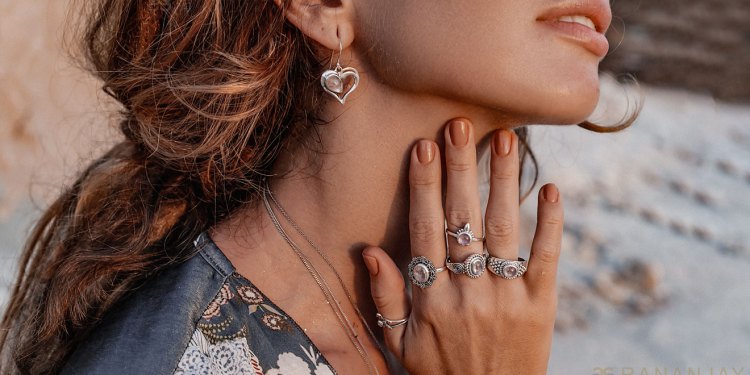Signet rings, adorned with family crests or emblems, have a rich history that dates back thousands of years. Once a symbol of power, identity, and authority, these rings have evolved into objects of heritage, status, and personal expression. The tradition and etiquette surrounding wearing signet rings with crests continue to be observed by many, offering a fascinating glimpse into the customs that have shaped this enduring symbol.
Historical Significance of Signet Rings:
Signet rings can be traced back to ancient civilizations, including the Egyptians, Romans, and Greeks. These rings served a practical purpose: as a seal to sign documents and authenticate the wearer’s identity. The engraved crest or emblem would be pressed into soft wax or clay, leaving a distinct impression recognized as a legal signature.
In medieval Europe, signet rings became essential tools for nobility and royalty. The rings were often passed down through generations, symbolizing the continuity of family lineage and the preservation of ancestral heritage. The design of the crest or emblem was carefully chosen to reflect the family’s values, achievements, and status.
The Role of Crests in Family Identity:
A family crest, also known as a coat of arms, is a distinctive heraldic design representing a family’s history and identity. The crest typically features a shield, helmet, and various symbols with personal or historical significance. Each element of the crest is imbued with meaning, from the colors to the animals and objects depicted.
The tradition of wearing a family crest signet ring is deeply tied to the concept of heritage. For many, the ring is not merely a piece of jewelry but a tangible connection to their ancestors. It serves as a reminder of the values and achievements of those who came before them and as a symbol of the responsibilities they carry as bearers of the family name.
Etiquette of Wearing Signet Rings:
The etiquette surrounding the wearing of signet rings varies depending on cultural and familial traditions. However, several general principles guide the proper use of these rings:
- Placement on the Finger: Traditionally, signet rings are worn on the pinky finger of the non-dominant hand. For men, this is typically on the left hand, while women may wear it on the right hand. The choice of finger is not arbitrary; it has historical roots, as the pinky finger was considered a symbol of trustworthiness and loyalty.
- Engraving Orientation: The engraving on a signet ring is usually designed to be read correctly when the ring is used to seal documents. Therefore, the engraving may appear upside down to the wearer when the ring is worn. This orientation is a subtle but important aspect of signet ring etiquette, reflecting the ring’s original purpose as a seal.
- Inheritance and Succession: Signet rings are often passed down through generations as family heirlooms. The transfer of the ring is usually accompanied by a formal or informal ceremony, symbolizing the passing of responsibility and authority from one generation to the next. It is considered a great honor to receive a signet ring with a family crest, as it signifies the trust and confidence of the previous generation.
- Occasions for Wearing: While some may choose to wear their signet ring daily, others reserve it for special occasions or formal events. In certain circles, wearing a signet ring with a family crest at inappropriate times or in casual settings may be seen as disrespectful or pretentious.
- Gender Considerations: Traditionally, signet rings were worn exclusively by men, but this has changed over time. Today, it is common for women to wear signet rings, especially those who wish to honor their family heritage. However, the design and size of the ring may be adapted to suit feminine tastes, often featuring more delicate engravings and smaller settings.
Modern Interpretations and Styles:
While the traditional design and use of signet rings remain popular, modern interpretations have emerged, offering a fresh take on this timeless accessory. Contemporary signet rings may feature minimalist designs, alternative materials, or even personalized engravings that reflect the wearer’s identity rather than family heritage.
Some people choose to engrave their initials, monograms, or personal symbols on their signet rings, transforming them into unique expressions of self rather than symbols of lineage. This shift reflects broader changes in society, where personal identity is increasingly shaped by individual choices rather than inherited traditions.
Despite these modern adaptations, the core values associated with signet rings heritage, continuity, and identity remain intact. For many, the decision to wear a signet ring, whether traditional or contemporary, is a statement of pride in one’s roots and a way to honor the past while embracing the future.
The Future of Signet Rings with Crests:
The tradition of wearing signet rings with crests shows no signs of fading, even as society evolves. The rings continue to be cherished family heirlooms, passed down through generations as symbols of continuity and legacy. In a world that increasingly values individuality, the signet ring serves as a reminder of the enduring importance of heritage and the connections that bind us to our ancestors.
As signet rings with crests remain popular, they are likely to evolve in design and significance. New generations may choose to reinterpret the symbols and emblems of their family crests to reflect contemporary values and experiences. In this way, the signet ring will continue to be a living tradition, adaptable yet rooted in history.
Conclusion
Wearing a signet ring with a family crest is a practice steeped in history and tradition. It embodies the values of heritage, identity, and continuity, serving as a tangible link to the past. The etiquette surrounding signet rings reflects the respect and reverence afforded to these symbols of family and authority. Whether worn as a daily accessory or reserved for special occasions, the signet ring remains a powerful expression of who we are and where we come from. As society changes, so too will how we interpret and wear these rings, but their significance will endure, reminding us of the enduring legacy of family and tradition.
Author Bio:
Diana Patterson is a jewelry blogger based in London, UK. She is passionate about antique and vintage jewelry and loves to blog about ways to style these rare jewels. She also covers contemporary jewelry designs while collaborating with industry insiders and designers like Hancockssignetrings to get insight into the latest trends.











Leave a Reply